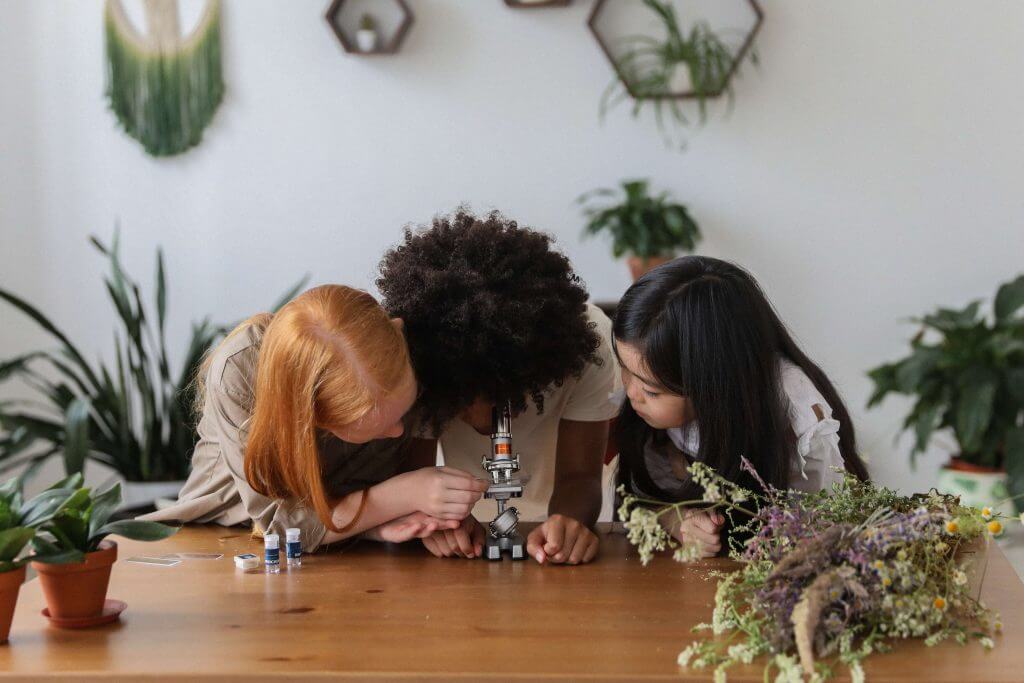Weather is part of our everyday routine. We wake up and let the weather decide what we’ll wear for the day. In some instances, we let the weather decide what we’ll do for the day, too. Though the weather is a mundane part of our everyday lives, it’s an exciting, unusual concept for children. “Why is it cold? Where did the sun go? What do dark clouds mean?” are all questions your child might ask you about the weather. Kids have a natural curiosity about the weather. Here’s how to turn that curiosity into creativity with four fun-filled weather experiments for kids!
Read more for our top experiments that can teach your kids about the weather.

1. Twister in a Jar
Tornadoes are incredible forces of nature, strong enough to tear down even the toughest steel structures. Here’s a fun way to harness the movement of a tornado without the danger or debris!
With a tornado in a jar, kids can see how rotating air patterns can create a tornado. For this experiment, you’ll need a mason jar, dish soap, and glitter. Fill the jar mostly full of water. Drop no more than two drops of dish soap into the mixture. Then, add a tiny sprinkle of glitter and close the lid. Shake using a circular motion to reveal your tornado!
2. Make Your Own Frost
This winter, don’t wait for frost to form in your backyard—make your own! You just need a few ingredients for this simple experiment:
- Aluminum cans
- Salt
- Crushed ice
First, fill your can with crushed ice, then sprinkle generously with salt. We’ve found that the more salt you use, the faster your frost will form. After about five minutes, you should see a good bit of frost forming outside the aluminum can. This is a great experiment to teach your children about condensation and the melting point of ice.
3. Hurricane in a Bowl
We’ve made a tornado in a jar; now, let’s make a hurricane in a bowl. This experiment is another great way to teach your kids about extreme weather. Before starting this experiment, take some time to discuss how hurricanes form. It’s important that your child understands that hurricanes form due to warm, wet air rising from the ocean. As the warm, wet air is replaced with cooler air rushing in, it begins a cycle that involves air and moisture swirling into a large storm. If the storm gets large enough, it will form a hurricane. For this experiment, you’ll need:
- A large glass bowl
- Blue liquid watercolor
- A wooden spoon
First, fill a glass bowl with water; enough to make it slosh around when it moves. Use a large wooden spoon to stir the water in a clockwise motion. Once the water is swirling, add in your blue watercolor. The color acts as the “hurricane” in your experiment. As the swirling water carries the color with it, you’ll notice a fanning out effect of your “hurricane.”
4. Make a Barometer
You don’t have to be a meteorologist to have a barometer. In this experiment, we’ll teach you how to make one. Many barometers use Mercury tubes to help measure air pressure, but today we will make one using a few items you already have in your home. For this experiment, you will need:
- A balloon
- A glass jar
- Scissors
- An elastic band
- A straw
- Pens
- Paper
- Tape
To begin with, cut the neck off your balloon. Take the bottom part of your balloon and stretch it over the neck of your glass jar. The balloon needs to be as flat as possible, with no dimple. Next, secure the balloon in place with an elastic band. Cut a straw at an angle to create a pointer. Tape the straw to the center of the balloon. Make sure the end of the straw ends in the center of your balloon.
After you finish making your barometer, take your paper and draw a sun and raindrops on opposite ends; this will be how you measure the air pressure inside of the jar. Ask your children questions as they observe the jar. Does the straw move a lot or a little? Can they tell if it’s raining or sunny based on the barometer?
Have your kids use this experiment throughout the week to predict the weather!
For more crafts, explore our blog!



